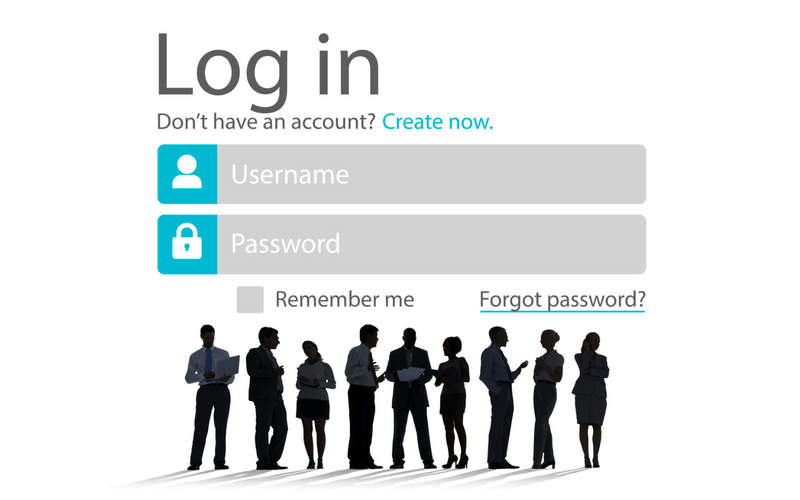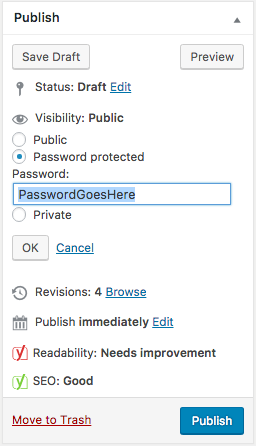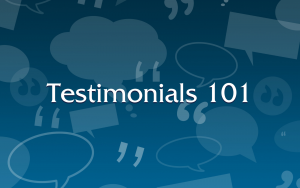
by Caelan Huntress | Oct 1, 2021 | Marketing Automation
marketing automation
email automation workflow
marketing automation software comparison
marketing automation examples
11 Best Examples of B2C Marketing Automation
copyediting and proofreading services
copy editing vs content editing
https://blog.hubspot.com/marketing/editing-vs-copyediting-under-100
copy editing services rates
http://www.the-efa.org/res/rates.php

by Caelan Huntress | Oct 1, 2021 | Content Marketing, Marketing Automation, Services
Intelligent autoresponder email marketing campaigns can save you lots of time, while creating a solid engagement process for prospective customers just as they begin engaging with you. Your autoresponder emails are crucial for converting strangers into customers.
Your weekly email newsletter is time-sensitive, and trapped in the present moment. Your autoresponder campaigns are eternal, and progress at the pace of your prospect’s knowledge of you, and is not limited by what you happen to be saying, writing, and sending right now.
Autoresponder Example
Out of Office Autoresponder Message
You’ve surely received an autoresponder like this before. You email someone, and you instantly receive a reply, telling you about the details of their vacation and when they expect to be back.
They don’t take the time to send you this email as soon as you hit their inbox. The entire purpose is that the autoresponder communicates what you need to know, in your timeframe, with total disregard of the sender’s timeframe.
For converting strangers into customers on your website, an autoresponder email sequence is typically used in concert with the stages of your sales funnel.
Consider how someone is feeling and thinking, just after they have subscribed to your list, and write your email to the customer avatar as they exist in that specific moment.
Typical Autoresponder Email Sequence
- Thank you for subscribing! Here is your lead magnet. Follow me on social media.
- Did you like the lead magnet? Here’s a story of someone who had a transformation because of it.
- Here’s another story, of someone who faced my customer avatar’s main problems, and how they were transformed.
- Brief mention of services.
- Educational email about the industry or current environment.
- People with this big problem seek a solution. I have a solution, and I will tell you next time.
- Hard sell of services.
- Educational email.
- Survey request.
The better ESPs (Email Service Providers) will allow you to segment your lists based on their activities. If someone subscribes to your list after becoming your customer, for example, you don’t want to send them the ‘hard sell’ email – they should be left out of that step in the autoresponder sequence.
Autoresponder Email Marketing Platforms
- ConvertKit
- Aweber
- Mailchimp
- Constant Contact
- InfusionSoft
There are plenty of others available to choose from, but these are the ones that we typically work with and recommend to our clients.

by Caelan Huntress | Apr 16, 2018 | Articles, Marketing Automation
Social media marketing can be done well, or done badly. No matter how good you’re doing, it could be really easy for you, or really hard. The easiest way to make sure your social media marketing is both easy and good is to follow the advice of people who have mastered the mediums.
6 Small Business Social Media Marketing Tips
#1 – Say something valuable.
Seth Godin talks about ‘the trap of social media noise.’ Just because we can say things in so many places, to so many people, it doesn’t mean we should.
“Prune your message and your list and build a reputation that’s worth owning and an audience that cares.”

– Seth Godin
#2 – Don’t spread too thin.
Every account you set up will cost you, in time, energy, and mental overhead. Ask yourself which accounts are really necessary, and if you should skip one, then do it.
Ashley Kemper wrote a comprehensive overview at Marketing Land comparing each social media platform, with specific guidelines on when these different platforms make sense. Her recommendations are very detailed, so read her article if you have any questions about a specific platform. Her guidelines were:
- Use Facebook if you want to reach a massive audience with a diverse array of content types.
- Use Twitter if you have frequent updates or content with a “timeliness” factor.
- Use YouTube if your business could benefit from product demos, testimonials, or putting a human face to your brand.
- Use Google+ if you have a physical location and want to appear in local search results.
- Use LinkedIn if you are in a B2B space, or you want to speak to a more professionally-oriented audience.
- Use Pinterest if you want to target a female audience and have great visual content.
- Use Instagram if you can create interesting visual content on a regular basis.
- Use Foursquare if you have a brick-and-mortar location.
Read her article for more depth on each platform, if you’re not sure whether or not one of them is a good match for you.
#3 – Variety is the spice of social media.
Posting the same thing, all the time, isn’t giong to keep your audience engaged or interested. On the 8Days blog, Jimdo recommends a 70-20-10 formula.
“Don’t be overly promotional: Nobody likes someone who just talks about themselves all the time. 70% of your content should add value for your followers (such as sharing blog posts, coupons, etc.), 20% should be sharing other people’s content (posts from other businesses or highlighting customers), and only 10% should be directly promoting your business (such as “come by our store we have a new shipment of handbags!”).”
Social Media Marketing Formula:
- 70% adding value
- 20% sharing other people’s content
- 10% direct promotion
For every promotional tweet you write, prepare to publish 10x that much content that is for connection and relationship-building.
#4 – Show Them The Wizard Behind the Curtain
Social media marketing is your opportunity to be seen by your audience, really seen. They don’t want to see your products; they want to see you, working at your craft. Share the stories of what it’s like to do what you do.
Ramsay at Blog Tyrant recommends being open on social media to create customer loyalty:
“Social media is a fantastic way to break down the barriers of facelessness. By showing your potential customers the people behind the business you are giving yourself a chance to be different from all the other competition. They will become loyal to you.”

– Ramsay
#5 – Get Popular To Get Seen
Popularity snowballs. The more that people like you, the more they like you, and it’s not just momentum; it’s math.
On the Buffer blog, Alfred Lua gives 10 social media tips, and describes the importance of popularity:
“Social media platform algorithms, such as those on Facebook and Instagram, are prioritizing posts with higher engagement on their feeds due to the belief that users will be more interested in seeing highly engaging content.”

– Alfred Lua
Collect likes, retweets, and shares, and you will rank higher ion the algorithm of social media platforms, and get seen more often.
#6 – Stay Authentic
Most people can sniff a sell-out, and it stinks. A genuine, long-term relationship can be completely derailed by staying in sales mode all the time.
Everybody needs to sell. It is, most often, why we get on a soapbox in the first place. But the only way to keep authenticity is by staying authentic, regularly.
As Timothy Skyes says in 8 Tips On How To Grow Your Social Media on Enterepreneur.com:
“You need to find that balance between popularity and business. You need to have a little bit of both and mix the more fun side that wants popularity with the serious and informative side that boosts the reputation of your business.”

– Timothy Sykes
Social Media Setup – Done For You, or DIY
If you need to get your new brand up and running on social media, you can hire Stellar Platforms to do it for you, or you can buy our DIY kit for a tenth of the price, and do it yourself.

by Caelan Huntress | Feb 19, 2017 | Services, Website Design
A professional WordPress website design provides three major advantages to your digital platform:
WordPress Website Design Advantage #1:
Updating your WordPress Website is easy.
Getting an update to your website doesn’t have to involve lengthy (and expensive) back-and-forth discussions with the one designer who knows how to change the website without breaking it. If you need to change a photo or some text, you can log in to the back end of your website yourself, point and click, and it’s done.
WordPress Website Design Advantage #2:
People know WordPress websites.
Web designers the world over understand WordPress – at last count, this open-source platform powers 25% of websites worldwide, and no competent web developer nowadays can look at a WordPress site and get lost. Whoever handles updates to your site in the future, it will be in a common language that anyone with IT skills can understand.
WordPress Website Design Advantage #3:
Your software license will never expire for a WordPress website.
The building blocks of your website will never be recalled, and customer support will never disappear. Too many people speak this language. When we build a website in WordPress, we are standing on the shoulders of the immense programming community that uses and loves this platform. We can start out with a quick, easy method of creating a cutting edge website, because the plugins and themes developed by other programmers are available for our use.
Your website is your digital storefront.
The virtual territory that you have claimed and made your own, crafted according to your aesthetics and tastes, a place where you can receive your friends, your audience, and your customers.
Design is not just what it looks like and feels like. Design is how it works. – Steve Jobs
New website visitors make instant decisions about the character of your business and your brand, based on the first few seconds on your homepage.
Returning customers will sift through your pages, and their experience will leave them feeling one of two ways – better or worse. A good web design can sway that decision.
Working with a professional web designer can make a lasting impression on the people who visit your website. Your website is your soapbox, where you can showcase your expertise and establish your authority in your industry.
A professional website design improves the image of your company, engages your audience with your message, and can help to increase customer inquiries and boost revenue.
3 Questions To Ask Yourself About Your Website
Website design is more than just the “look and feel” of the site. Like Steve Jobs said, design is ‘how it works.’ So, how does your website work?
- How does your website encourage the flow of visitors from one step to the next?
- What is the ultimate conversion goal for each website viewer?
- What action do you want your new website visitors to do?
Your website is the foundation of your online marketing strategy, which is why it is essential to work with someone who understands the psychology of web design.
Are you thinking about making or redesigning a website?
Click here, and let's talk about it.
Let’s talk a bit about what a new website design can do for your future.
Answer these questions thoughtfully, and it will assist me in translating your vision into a happy website visit.
I want to know more than just what your new site will look like; I also want to understand what the new website will do for your business.
“I’ve had many sites built over the past 10 years. This was, hands down, the best experience in regards to efficiency, design, and back-end mechanics. Caelan is easy to talk to, patient, knows what he’s doing and can execute in a timely manner. It was a pleasure.”
President, Las Vegas Convention Speakers Bureau

by Caelan Huntress | Feb 16, 2017 | Services, Website Design
A Responsive Website Design changes the layout and sizing of your website elements, based on the size of the screen upon which it is viewed.
In the old days, websites had a defined width, and sometimes a defined height. If your screen resolution did not match those exact numbers, you would have to scroll left-to-right to see the entire website.
Users are used to scrolling up and down, to see the parts of web pages that are ‘below the fold,’ but scrolling left-to-right provides some real usability problems. Now that devices are built with resolutions as wide as 2560 pixels, and as small as 300 pixels, having a defined website width creates a bad browsing experience for most people – unless the website is responsive.
Responsive websites are often 100% width, meaning that they take the full width of the browser, wide or narrow.
To see Responsive Website Design in action:
Responsive Website Design Example On a Desktop:
- Bring the cursor of your mouse over to the right hand side of your browser window.
- Click and drag the side of the browser window to the left
- Notice how the columns below shift their size and appearance
You can even set some elements to only show at certain browser widths, meaning: you can have elements that show only for tablets, only for desktop, or only on mobile.
Responsive Website Design Example On a Tablet or Mobile Device:
- Turn your device 90˚ to one side.
- Notice how these elements change their position? That is responsiveness.
“If you are willing to do only what’s easy, life will be hard, but if you are willing to do what’s hard, life will be easy.”
– T.Harv Eker
“We cling to our own point of view, as though everything depended on it. Yet our opinions have no permanence; like autumn and winter, they gradually pass away. ” – Chuang Tzu
Responsive website design is essential for SEO
Responsive website design makes it easier for customers to connect with your brand on a device they use all day long: their mobile phone.
Making the effort to build a beautiful website won’t matter, if the website can only be easily viewed on one type of device. Your website needs to look good on desktop, tablet, and mobile.
Many people search the internet on their mobile phone or on a tablet, and older web designs don’t look good on those little screens.
Responsive web design shifts the elements of your website depending on the size of the browser that is viewing it, so it looks good on every device.
Mobile friendly websites are more likely to show up in local search results, and good local search rankings give you the opportunity to connect with more customers in your area.
“Throughout the entire process of updating and re-designing our website, I was thoroughly impressed with Caelan’s work. He was consistently available once weekly for a phone conference to discuss ideas and progress, and was always available to field any questions I had. He also offered a lot of creative suggestions for the website design, and coaching and guidance for future ideas I have for our business growth, as it relates to our website. His willingness to offer further training to myself and my assistant for continued content updates to out site was a very nice bonus. Ultimately we are very pleased with his work and excited about the new website.”
Hawthorn Healing Arts Center

by Caelan Huntress | Feb 14, 2017 | Services, Website Design
The advantages of a WordPress CMS are huge – you can easily upload new content, categorize it in your page structure, and organize pages and posts via tags. For premium content delivery, you can protect your best content from the general public by creating a membership site with WordPress. Membership websites create a members-only section of your website, where only your customers and registered users can read, watch, and download your best content.
Membership Website WordPress Overview
If you have a WordPress website, you know how to login to /wp-admin – you enter your username and password, and gain access to the back-end of the website.
There are many different permissions levels in WordPress. The 4 standard levels are:
- Admin
- Editor
- Author
- Subscriber
Each of these permissions levels gains access to different levels of functionality within your website. Admins can do anything and everything, including creating new users, changing core theme files, and more. Editors can publish content to make it live on the website, while Authors can create content, but cannot publish their changes.
You can use the Subscriber level to protect your premium content, or create another level for ‘Customer’ or ‘October Mastermind’ or ‘Community Member,’ and assign access to specific pieces of content in your website based on the user’s permission level.
What this means: You can designate any WordPress post or page as ‘private,’ meaning it is only accessible to logged-in users. You can designate which user levels can access certain pages, meaning that if you have a different user level for every product in your library, you just need to assign a specific user level to an account after a product is purchased in order to unlock access to that content.
How To Build Membership Websites
The easiest way to create membership websites is to download a membership plugin. Here are three good ones:
- MemberPress
- Paid Membership Pro
- WooCommerce Memberships
These out-of-the-box solutions allow users to register and gain access to select areas of your website, but they do not integrate with your shopping cart right away. It takes some work to get a specific membership level to co-ordinate with a specific product purchase, and getting the plugin to automatically generate a username and password, that already has the right login level, is the tricky part of the automation.
Easy Membership Website Trick
 Do you have some premium content you would like to protect?
Do you have some premium content you would like to protect?
There is an easy way to make membership websites, baked into the WordPress CMS itself. It won’t create logins for users, but it will protect your content with a password.
Publish your premium content on your WordPress website as a standalone page. When you publish it, under Visibility don’t select Public (the default) or Private, select ‘Password Protected.’ Enter the password that users need to enter to access your content.
Now, if you want to deliver some premium content to your email newsletter subscribers, for example, you can send them the link and the password. It won’t be available to everyone on the internet, but only to those with the password.












 Do you have some premium content you would like to protect?
Do you have some premium content you would like to protect?  I am an American expat living in New Zealand, and I have spent ten years running an online business while traveling the world with my young family. I'm a website designer, copywriter, and sales strategist who specializes in creating online courses and sales funnels for bestselling authors, business coaches, and professional public speakers.
I am an American expat living in New Zealand, and I have spent ten years running an online business while traveling the world with my young family. I'm a website designer, copywriter, and sales strategist who specializes in creating online courses and sales funnels for bestselling authors, business coaches, and professional public speakers. 
